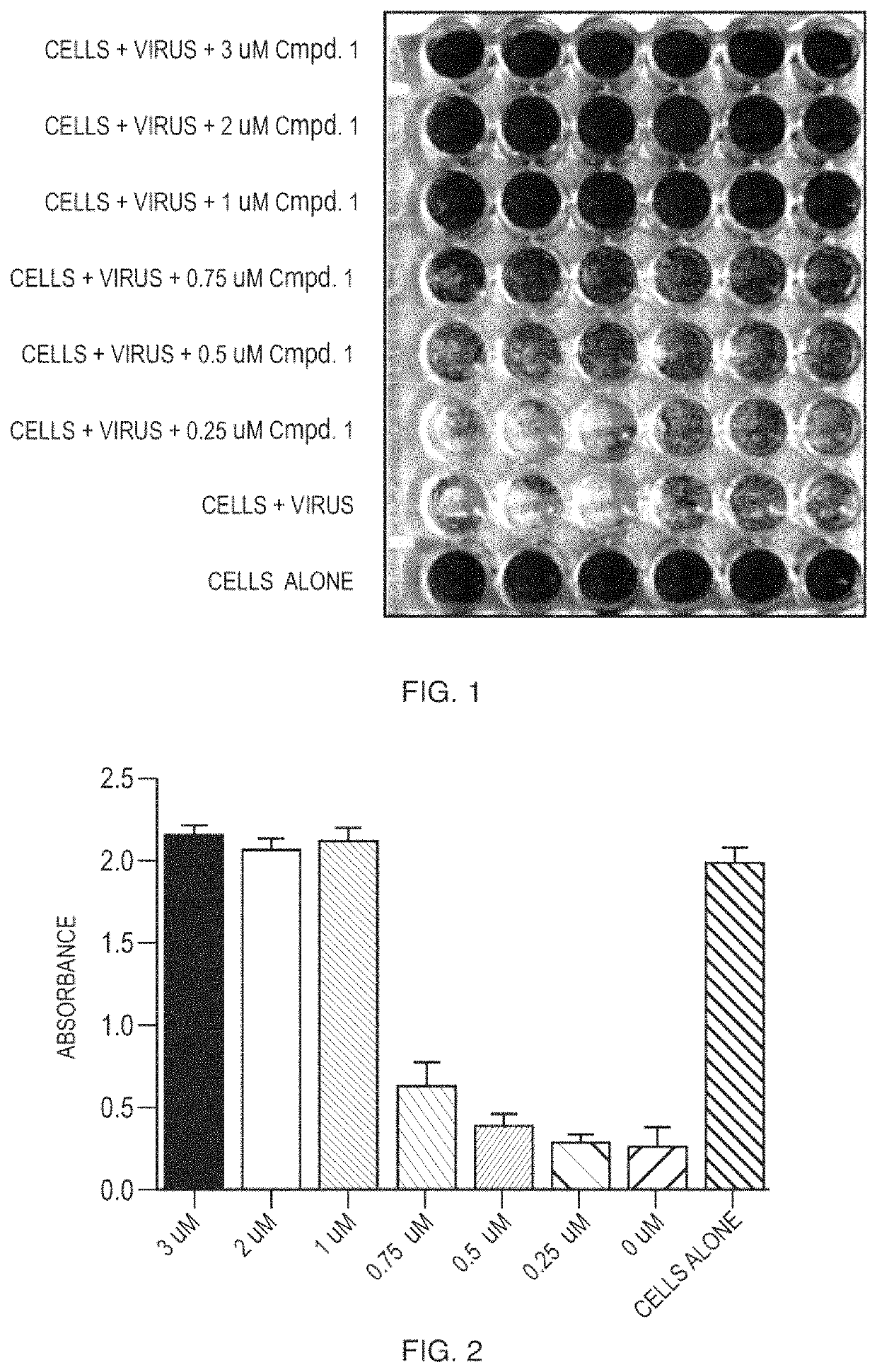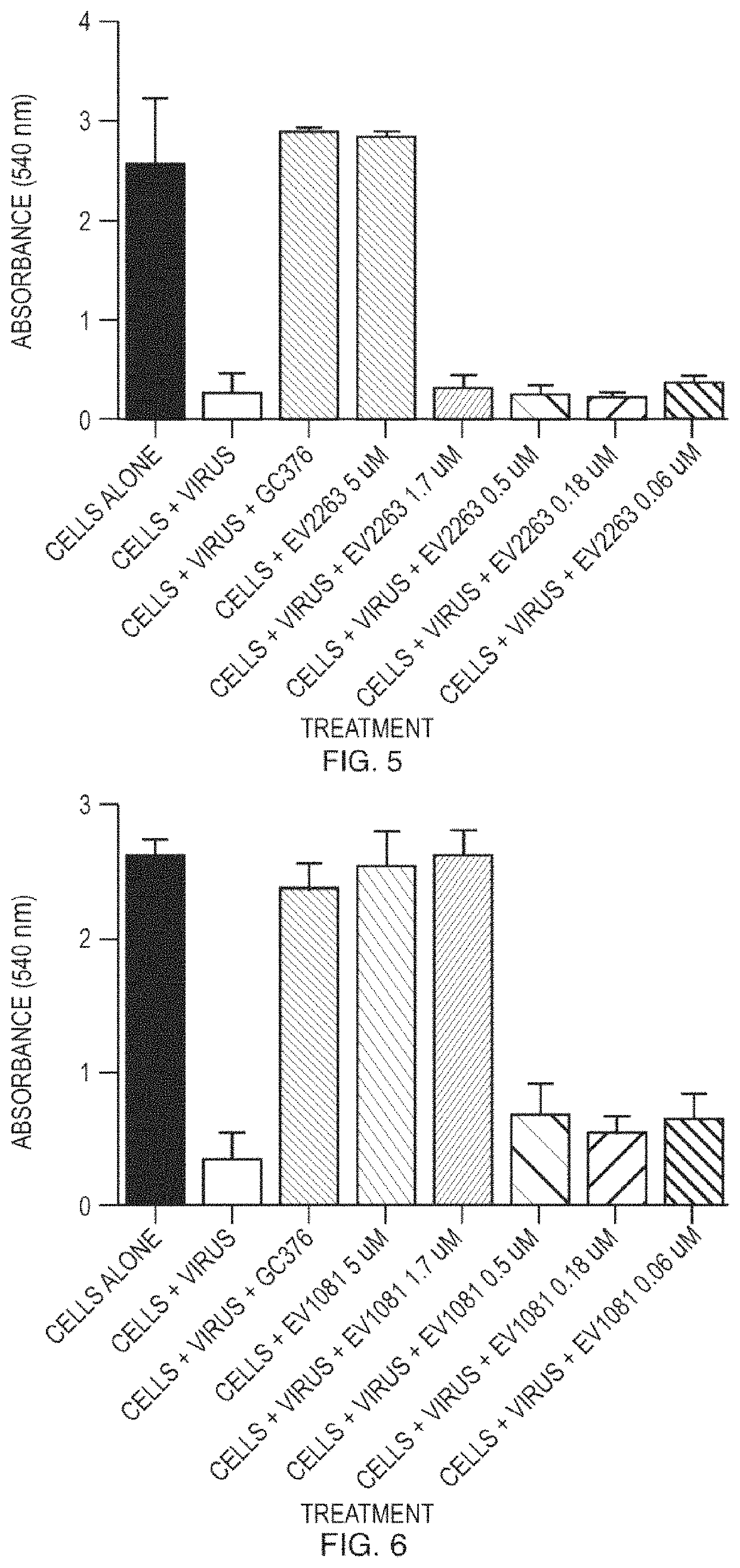Methods of treating feline coronavirus infections
a feline coronavirus and treatment method technology, applied in the direction of antivirals, amine active ingredients, medical preparations, etc., can solve the problems of no approved vaccines or effective antiviral therapies, invariably fatal development of wet or dry form of fip, and no effective antiviral therapy
- Summary
- Abstract
- Description
- Claims
- Application Information
AI Technical Summary
Benefits of technology
Problems solved by technology
Method used
Image
Examples
example 1
[0119]Compound 1 was screened for activity against feline Coronaviruses in an in vitro assay. Serial dilutions of Compound 1 were mixed with 2.5×104 copies of feline coronavirus and added in sextuplicate to 96 well plates with pre-seeded CRFK cells. The plates were incubated for 72 hours followed by a staining of the cell culture monolayers with crystal violet. The level of virus-induced cytopathic effect was quantified visually and using a plate reader. Positive control wells comprised the virus without Compound 1. Negative control wells lacked both virus and Compound 1. The EC50 was calculated by regression analysis. The EC50 of Compound 1 is shown in Table 1.
[0120]
TABLE 1EC50Compound 10.77 μM
[0121]Compound 1 was screened for cytotoxicity in uninfected CRFK cells using a commercially available CellTox Green Cytotoxicity Assay (Promega). The assayed was performed in a 96 well place formate using serial dilution of Compound 1 in sextuplicate. Compound concentration...
example 2
[0123]Compounds were tested for antiviral activity against feline infectious peritoneal virus (FIPV) in Crandell Rees Feline Kidney (CRFK) cells. Serial dilution of compounds were mixed 10 to 100 TCID50 of FIPV and added to 96-well plates containing pre-seeded CRFK cells. The plates were incubated for 48 hours at 37° C. After the incubation, the CRFK cell monolayer was stained using crystal violet and the level of FIPV-induced cytopathic effect was quantified using an absorbance plate reader. EC50 values were determined using nonlinear regression analysis. See FIG. 1 to FIG. 15.
PUM
| Property | Measurement | Unit |
|---|---|---|
| weight:weight | aaaaa | aaaaa |
| particle size | aaaaa | aaaaa |
| densities | aaaaa | aaaaa |
Abstract
Description
Claims
Application Information
 Login to View More
Login to View More - Generate Ideas
- Intellectual Property
- Life Sciences
- Materials
- Tech Scout
- Unparalleled Data Quality
- Higher Quality Content
- 60% Fewer Hallucinations
Browse by: Latest US Patents, China's latest patents, Technical Efficacy Thesaurus, Application Domain, Technology Topic, Popular Technical Reports.
© 2025 PatSnap. All rights reserved.Legal|Privacy policy|Modern Slavery Act Transparency Statement|Sitemap|About US| Contact US: help@patsnap.com



